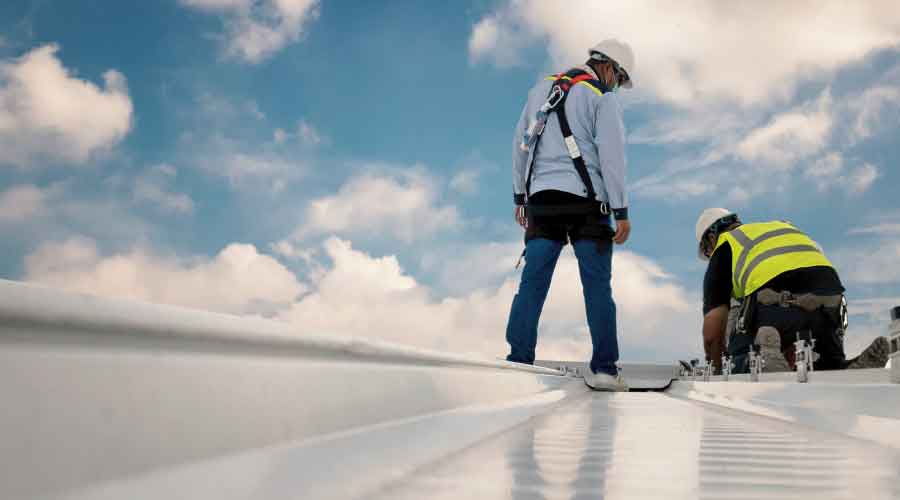CEIR's RoofPoint System Helps Facility Managers Evaluate Roof Efficiency, Durability
As many facility managers are well aware, heating, cooling, and lighting buildings can require large amounts of energy. In fact, the energy required to carry out these functions in both residential and commercial buildings across the U.S. accounts for about 40 percent of the country's energy use, notes James Hoff, vice president of research with the Center for Environmental Innovation in Roofing (CEIR), a not-for-profit organization focused on the development and use of environmentally responsible roofing systems and technologies. That's more than the amount of energy we use getting to and from those buildings.
The roofing systems on these buildings, although they may not grab occupants' and visitors' attention in the same way that, say, upscale lobbies or plush boardrooms do, have a tremendous impact on energy use. Hoff estimates that if all of the approximately 60 billion square feet of commercial roofing surfaces currently in place in the United States were built to the most recent minimum energy codes, the annual energy savings would top 700 trillion BTUs. By way of comparison, that's more than the amount of energy derived from petroleum used by the commercial sector in 2011, according to the U.S. Energy Information Administration.
Of course, every roof will never be replaced at the same time. However, about 3 to 3.5 billion square feet of new roofing systems are installed each year, with about 2.5 billion square feet placed on existing buildings, Hoff says. The potential to save energy by choosing more efficient and sustainable systems is significant.
The fact that the majority of new roofing systems are installed not on new construction but on existing buildings prompted Hoff and his colleagues at CEIR to develop the RoofPoint Rating System. RoofPoint is a method for assessing the energy efficiency and sustainability of roofing systems. This is in contrast to some other programs designed for evaluating and boosting facilities' energy efficiency. "Their formats are more suitable for new construction versus retrofits," Hoff says. As a result, these systems tend to be more involved and expensive.
That's left a gap in the market. Hoff notes that the average re-roofing project comes in at about 10,000 square feet, and at a cost of $5 to $10 per square foot. "It's difficult to apply a sophisticated, expensive rating program at that scale." (Currently, the RoofPoint application is free, although CEIR may charge a nominal fee at some point in the future.)
At the same time, the average commercial building is one to two stories tall, adds James Kirby, vice president of sustainability with CEIR. "The roof is a significant portion of the building envelope," he says. Roofing systems play a key role in keeping energy loss to a minimum.
Related Topics:














